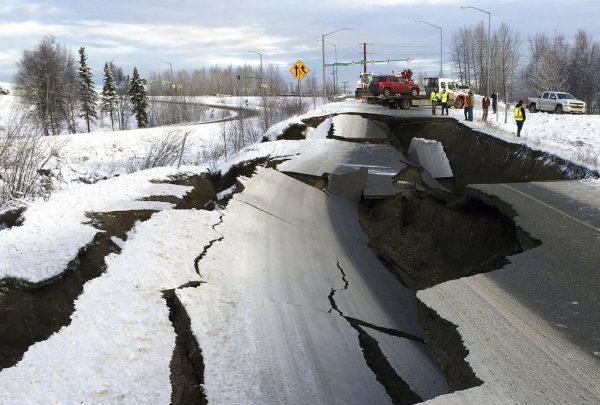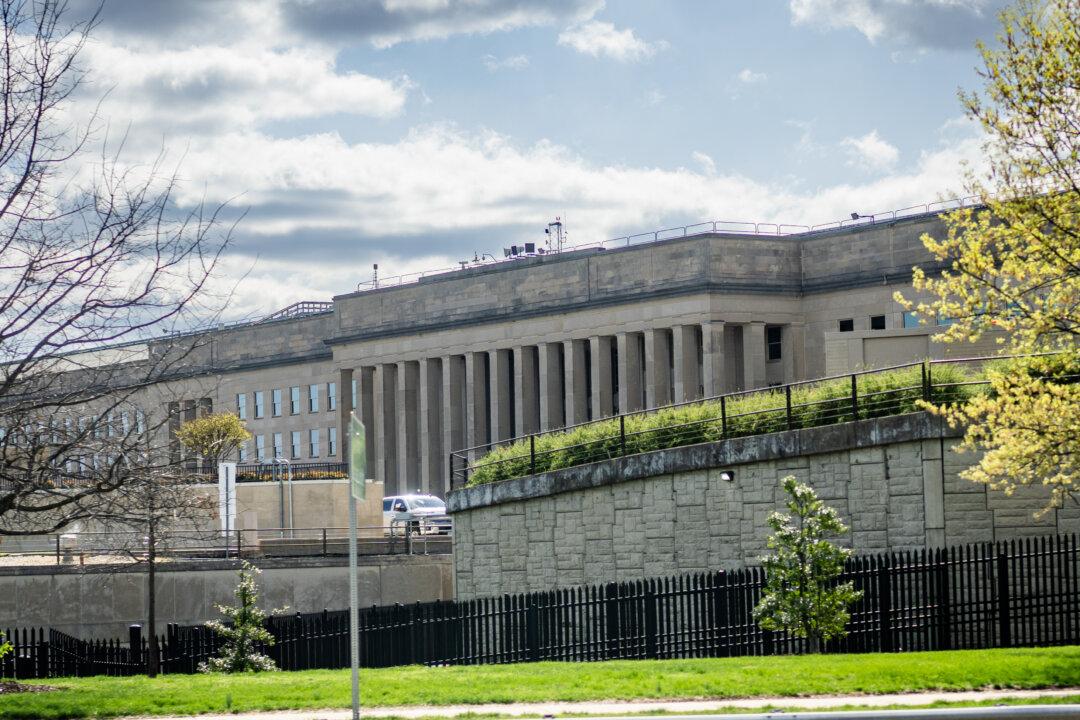Thousands of people in Alaska were left without power after a major earthquake just north of Anchorage damaged buildings, roads, and other infrastructure.
The 7.0 magnitude earthquake hit at 5:29 p.m. UTC just eight miles north of the city, which has nearly 300,000 people. A 5.2 magnitude quake hit soon after.
Utility companies were working overnight to try to restore power to some 30,000 customers and fix hundreds of gas leaks.
About 40 people were working out in the field to fix the leaks.

Chugach Electric Association said the quake triggered about 21,000 outages for its customers but by the end of the day, crews had fixed all but 200. Anchorage Municipal Light and Power said it started at about 10,000 outages and had reduced that to about 1,000 by the end of the day.
“We anticipate that most customers will have power restored by close of business today, with isolated pockets still out due to damage on the ground,“ the utility said in a Facebook post. ”Please prepare accordingly.”
Anchorage Municipal Manager Bill Falsey said that because of the progress already being made, he didn’t expect protracted outages. City workers were also responding to reports of 28 mainline water breaks and dozens of requests to cut off residential service because of flooding.
But the larger repair effort will take more than a week or two, especially with the damaged roads, Alaska Gov. Bill Walker said at a news conference on Friday. Walker leaves office Monday and says he advised Gov.-elect Mike Dunleavy’s staff of what his staff has been doing to take care of Alaskans affected by the quake.

‘Quicksand’
Scientists said the damaging Alaska earthquake and aftershocks occurred on a type of fault in which one side moves down and away from the other side.Seismologist Lucy Jones told reporters Friday at the California Institute of Technology that the fault is within the Pacific tectonic plate that is diving under Alaska, a mechanism that produces the largest earthquakes in the U.S.
Jones said the type of damage being reported is not surprising and that the area in which the quake occurred has loose sediments containing lots of water and when the ground moves it creates liquefaction, or “temporary quicksand.”
Jones said liquefaction can cause damage to structures because the ground moves out from beneath them.
Alaska seismologist Mike West said the earthquake was the most significant to strike Anchorage since the 1964 earthquake in the area, while noting that it will take some time to fully assess the impact.
“Anyone who felt the strong shaking this morning has more of a reminder ... than we will ever be able to put out as public service announcement,” he added.
A 2016 7.1 magnitude quake was also felt throughout the Anchorage area but it appeared to do less damage because it was about 160 miles away versus eight and was also deeper, at a depth of about 75 miles.




